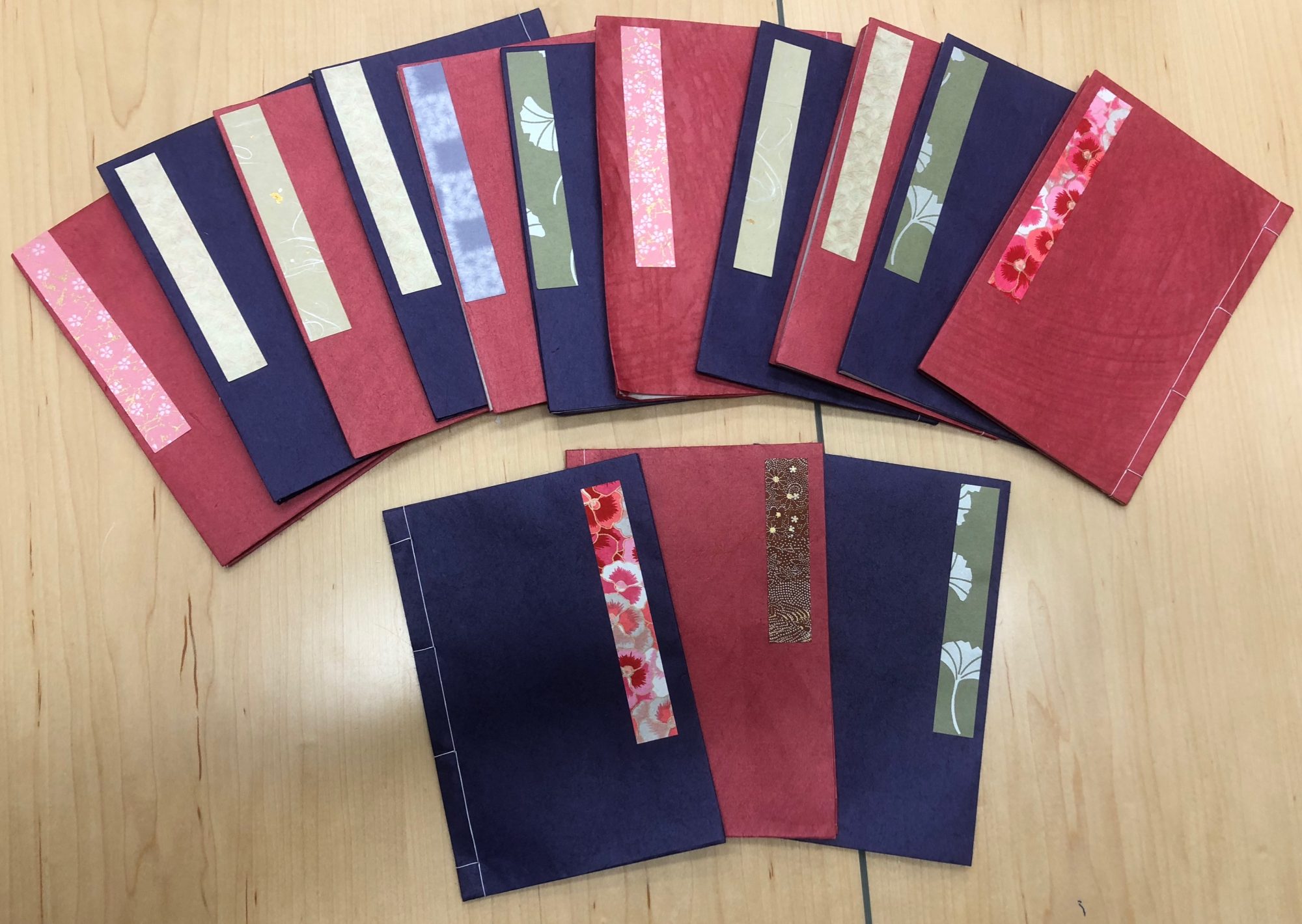Throughout the semester, our class has been investigating the book in East Asia in a variety of ways. We’ve been doing the kind of thing we all expect to do in class–read books and articles and discuss them, looking at powerpoints–but we’ve also been really fortunate to have “real stuff” on the table every day. Books from the Ming dynasty to early modern Japan, twentieth-century Korea to contemporary anime have shared our space, as have some amazing ukiyo-e prints. (Thanks to the Kislak Center!) Each student has “adopted” a book from the Penn Library and is preparing a page about this book–these will be appearing soon on this site.
We’ve also had several guest experts discussing their specialties. Dr. Soren Edgren, Princeton University, discussed the book in early China and brought artifacts and paper samples for us to consider. Dr. Hyunjae Yoo, Research Fellow of Kyujanggak Institute for Korean Studies at Seoul National University and Visiting Scholar in the James Joo-Jin Kim Program in Korean, wowed us with his knowledge of the book in Korea and talked with us about examples in the Penn Museum (shout out to our collaborators there, too!). We made paper with Nicole Donnelly from PaperThinkTank! and we learned how to make and bind Japanese books with Val Kremser, a conservator in the Penn Library (those are our books on the landing page of this website!).
Thanks to Dr. Frank Chance from the Department of East Asian Languages and Civilizations at Penn, we learned a lot about how Japanese literati painter Tani Bunchō used the illustrated book as a vehicle for representing his paintings to a broader audience. And Drs. Ayako Kano, Linda Chance, and Julie Davis (from EALC and History of Art here at Penn) talked about their collaboration in reading old books and their ongoing transcription and translation of a little yellow-backed novel about a vendetta–and Dr. Kano placed the book against a complex background of history, kabuki, and book publication. In Dr. Tim Clifford’s talk we heard about how the book in Ming and Qing China was used for those wanting to succeed in the civil examination service–this whole enterprise supported a large-scale production of books. (Dr. Clifford, a Penn Ph.D, kindly fit us in on his way back to his fellowship at the Academia Sinica.)
Next up: Dr. Molly des Jardin and Mike Williams will talk with us about recent acquisitions in the Penn library for the Meiji and Taishō periods (see Mike’s entries on the Unique at Penn blog for a sneak preview). And our final speaker of the semester will be Dr. Erin Schoneveld from Haverford College (and a Penn Ph.D) talking about the Shirakaba group and its use of the coterie journal to transform modern painting in Japan in the nineteen-teens and ‘twenties.





